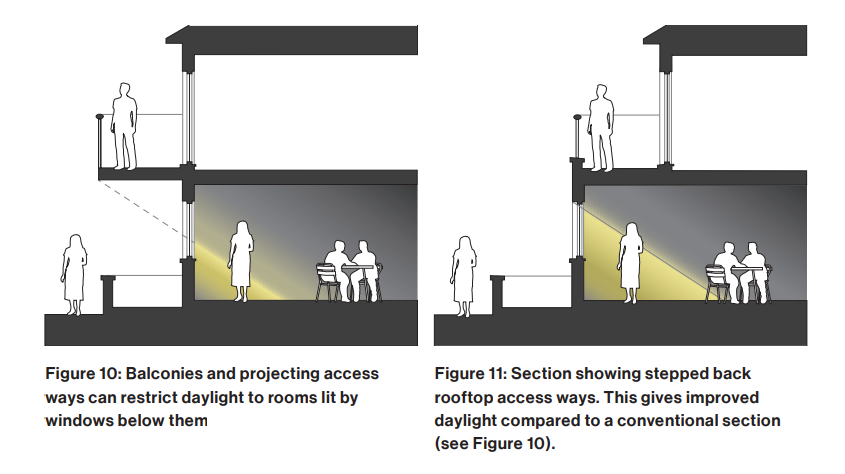Within the domain of property development, the concept of Right to Light has become as a key consideration for builders and property owners alike. It covers the lawful rights that individuals have to get natural light from their windows. Understanding these rights is essential not only for guaranteeing compliance with the law but also for stopping potential disputes that can occur with neighbors who may feel their light access is being infringed upon. As urban landscapes transform and buildings rise higher into the skyline, the importance of Right to Light surveys has never been higher.
This write-up aims to debunk common myths surrounding Right to Light and provide understanding on what these surveys involve and why they are important. We will explore the history and legal foundation of Light Rights in the UK, highlight when to commission a survey, and discuss how these assessments impact planning permissions. With practical insights, case studies, and expert opinions, readers will gain a thoroughly detailed understanding of the right to light in property development to manage this crucial aspect of real estate effectively.
Understanding The Right to Light
Right to light is a juridical principle that enables landowners to enjoy a particular amount of daylight through their fenestrations. This entitlement is derived from common law and is especially important in urban areas where buildings can hinder daylight. When a property has enjoyed light consistently for a significant of years, the owner may have gained a right to that sunlight. https://lundgren-wolf.hubstack.net/in-what-way-right-to-light-impacts-property-developments seeks to reconcile the interests of developers with the entitlements of current property owners.
The importance of right to light in property development cannot be understated. As urban areas grow and change, recent projects often jeopardize the light access of surrounding properties. This is for this reason comprehending your entitlement to daylight is essential for both builders and property owners. Failing to consider light entitlements can result in disputes and may even interrupt development projects, costing resources and financial investments. Therefore, tackling light access issues in advance can facilitate smoother development approvals and maintain healthy neighborly relations.
A right to light survey is an essential tool in evaluating potential impacts on sunlight and sunlight availability before building starts. By using this survey, developers can identify and mitigate any problems with neighboring properties’ entitlements to light. Understanding the legal foundation for these entitlements, which has developed over years in the United Kingdom, ensures that developers can navigate planning permissions effectively while minimizing the risk of legal disputes with adjacent property owners.
Legal Aspects
Understanding the legal framework surrounding Light Rights is important for property developers. In the UK, the right to light is established through common law and the 1832 Prescription Act, permitting property holders to enjoy natural light without interference. If a neighboring development significantly diminishes the light available to a property, the affected owner may claim an infringement. Developers should be aware of these rights to avoid expensive disputes and potential legal challenges.
When ordering a Right to Light survey, it is necessary to comply with relevant legal standards and protocols. The Building Research Establishment provides important recommendations for evaluating daylight and sunlight levels. Adhering to these recommendations not only helps in fulfilling legal requirements but also increases the likelihood of obtaining development permission. Proper documentation and assessments will demonstrate careful consideration in the face of potential objections.
In light of neighboring properties' entitlements, developers must navigate the complex equilibrium between their development goals and existing light rights. Effective dialogue with nearby property owners can often prevent objections, allowing for more seamless project execution. Additionally, knowing the remedies available in cases of violation is crucial, as compensation and modifications may resolve disputes amicably, thereby facilitating a successful development journey.
Survey Process
Carrying out a Light Assessment survey entails multiple important phases to confirm reliable assessment and conformity with statutory requirements. First, surveyors will collect details about the current light situations on the site in question. This entails evaluating the dimensions of the buildings involved and the vicinity to determine how much light is currently reaching openings and interior areas. This research is vital to establishing a starting point for the evaluation of any planned developments.
After the necessary data has been gathered, the assessors will evaluate it using various tools and programs to model the effects of the suggested changes. Right To Light Aldwych involves creating 3D models that depict how light will change with upcoming developments. The surveys will generally follow the guidelines set forth by the Building Research Establishment guidelines, which offer a framework for measuring daylight and sunlight levels in relation to zoning requirements. This step is essential for understanding whether the development will interfere on the light rights of surrounding properties and how the overall light distribution will be affected.
Following analysis, the survey results are assembled into a comprehensive Daylight and Sunlight Report, which details results, possible impacts, and recommended actions. This report not only acts as a valuable resource for planning applications but also helps facilitate discussions with stakeholders, including adjacent property owners who may have objections. When possible disputes arise regarding light rights, the report can strengthen discussions or court cases, ultimately protecting both developers and concerned individuals in the development process.

